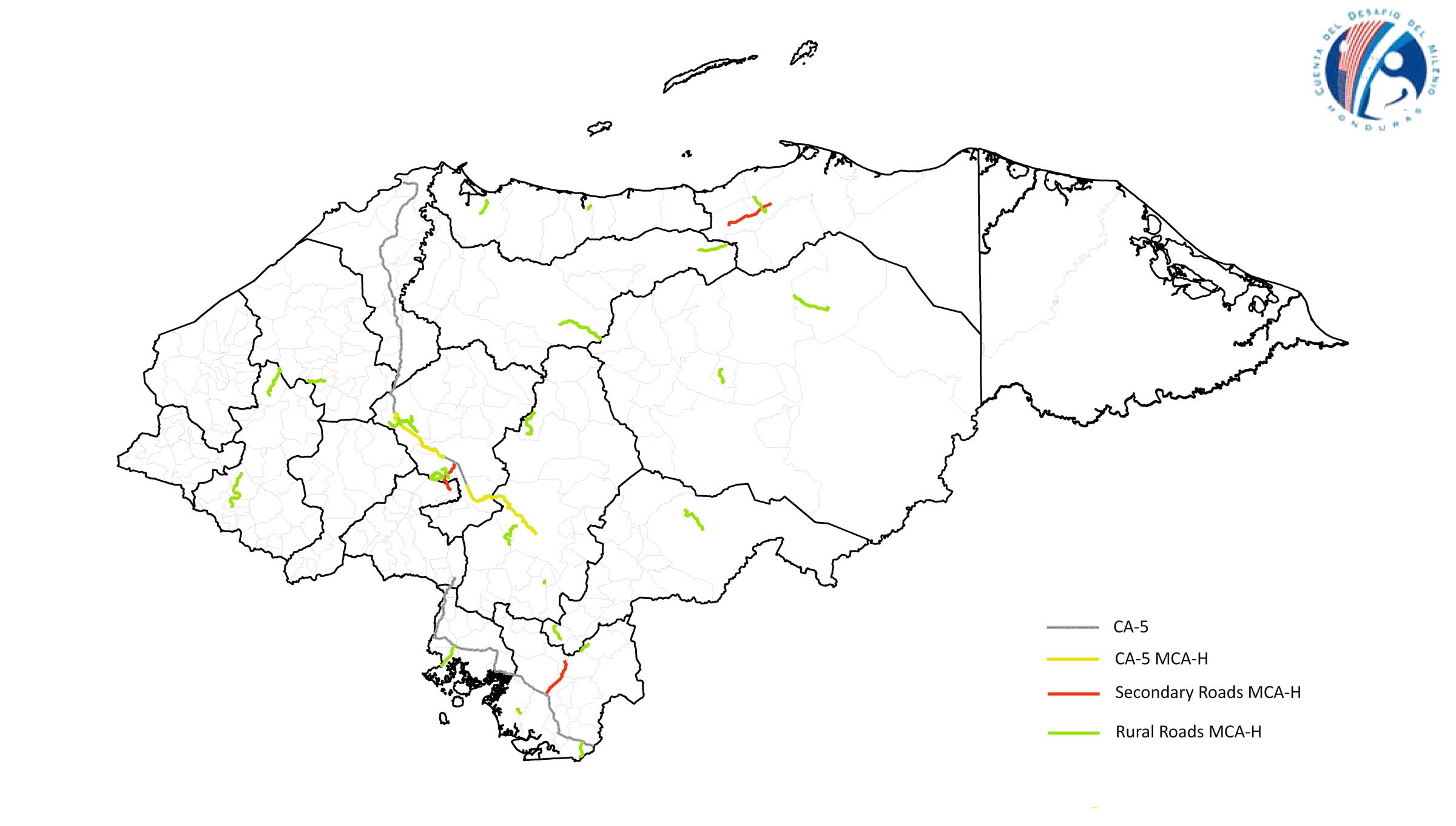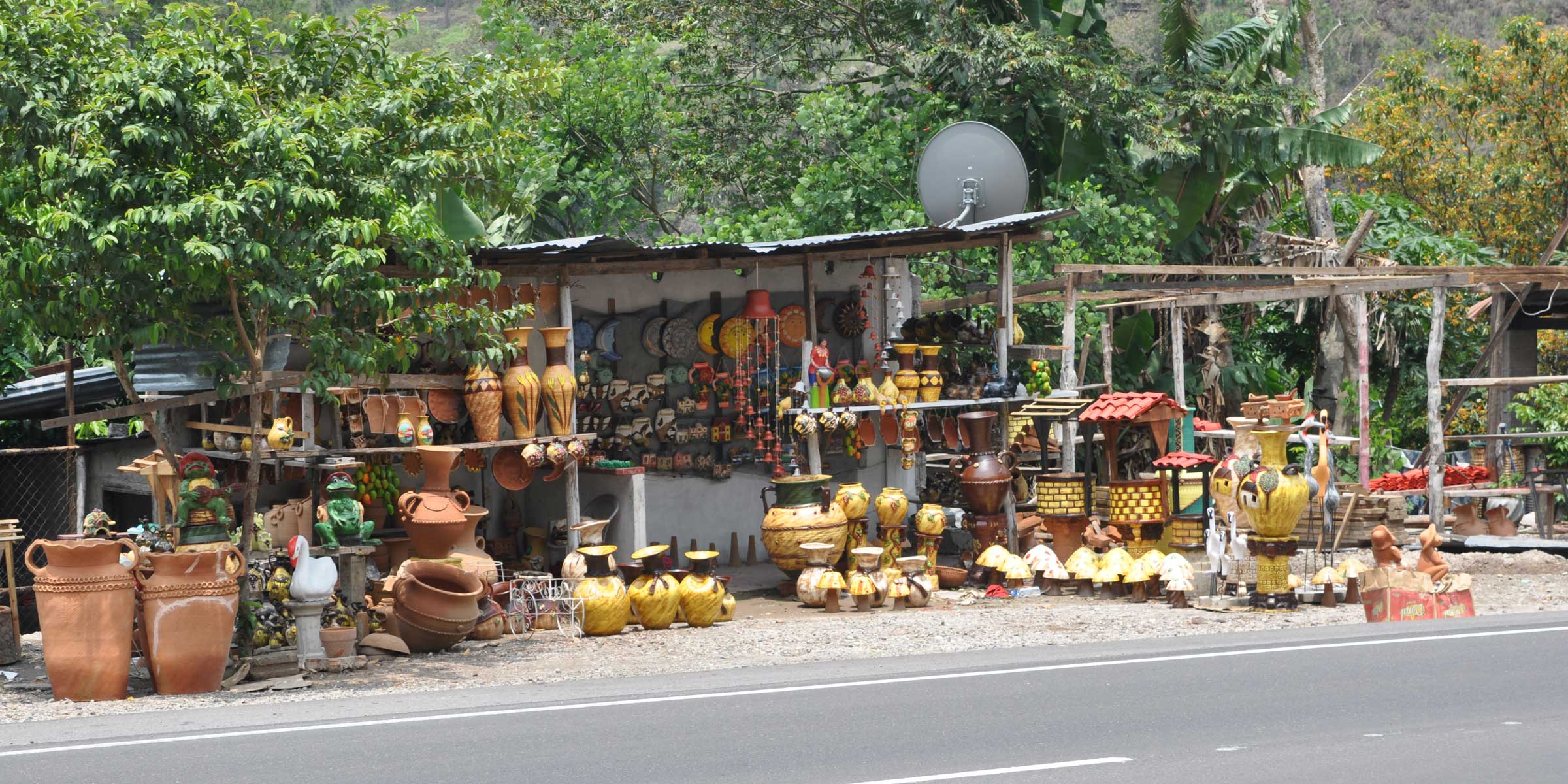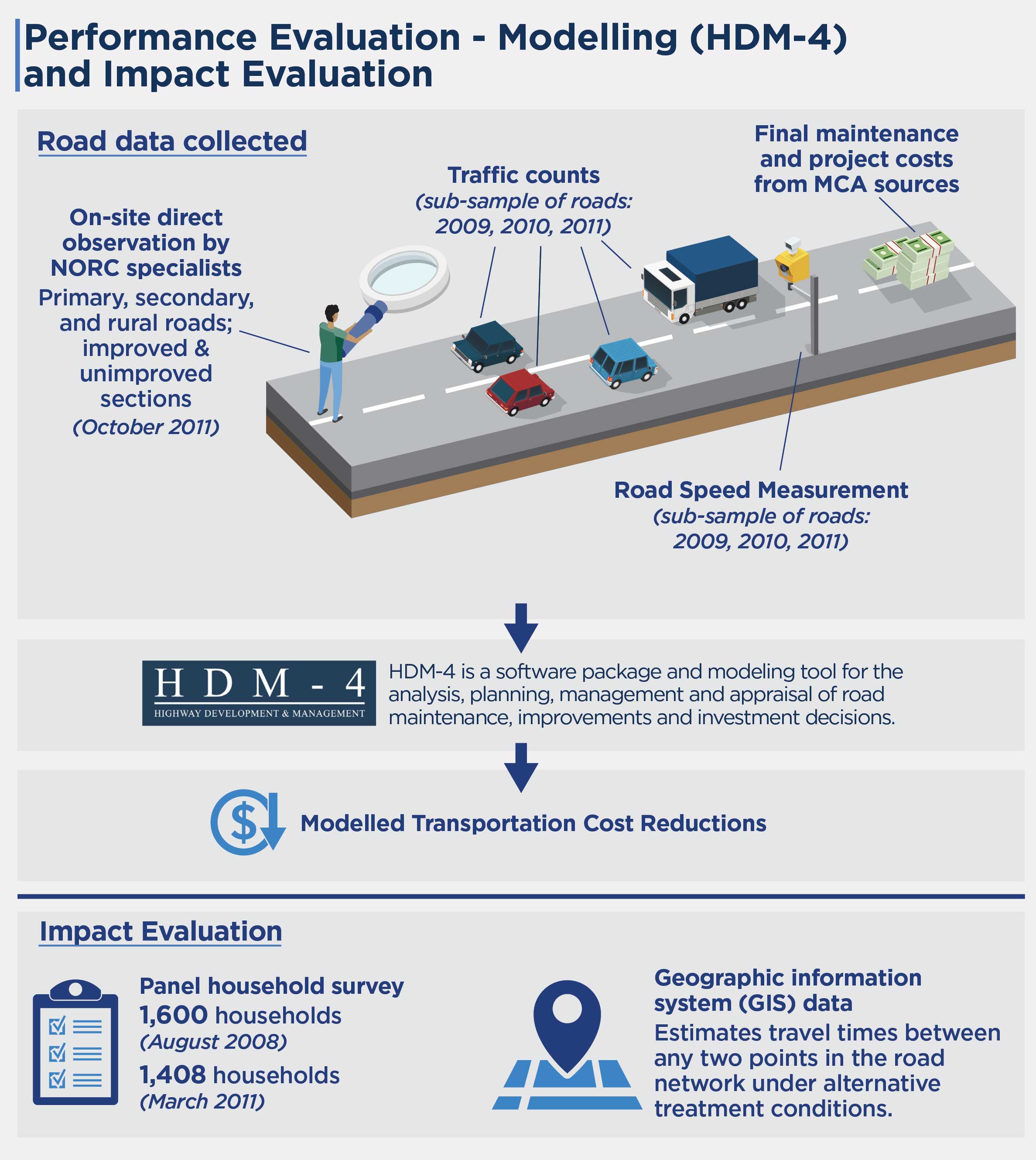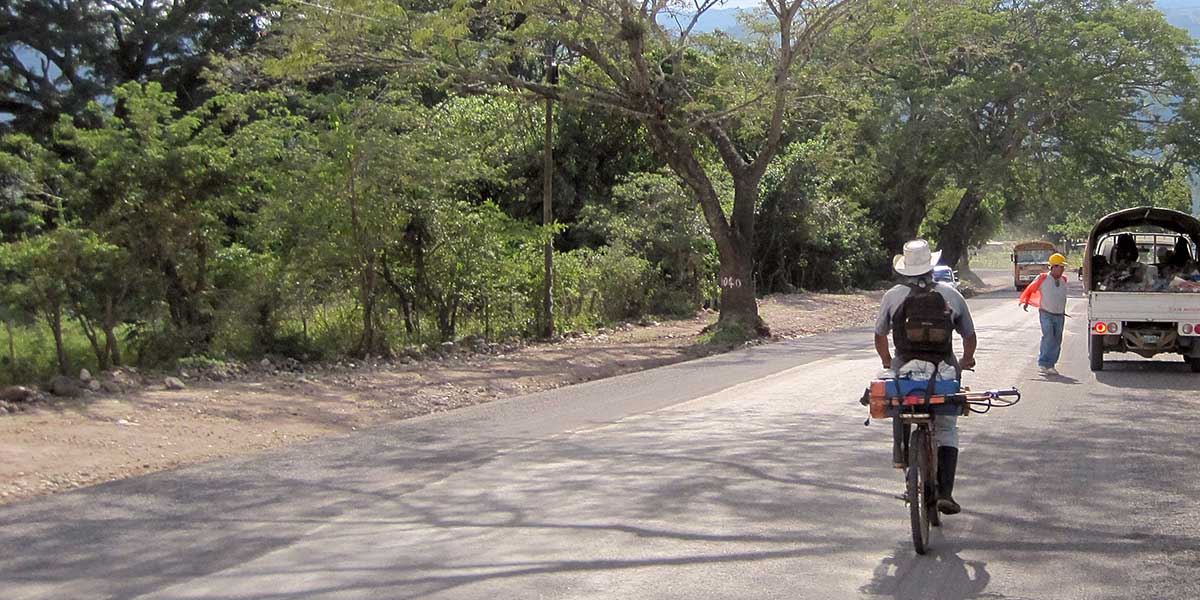Program Overview
MCC’s $204 million Honduras Compact (2005–2010) funded the $120.5 million Transportation Project to upgrade 109.1 km of primary roads (Highway CA-5) and 65.5 km of secondary roads, as well as the $20.1 million Farm-to-Market Roads Activity to upgrade 495 km of rural roads. The government leveraged compact funds to secure a $130 million loan with the Central American Bank for Economic Integration (CABEI) to fully fund Highway CA-5 upgrades. The activities aimed to reduce travel costs and times to improve access to markets, wage employment, and social services such as hospitals and schools.Evaluator Description
Millennium Challenge Account Honduras commissioned NORC to conduct an independent final impact and performance evaluation of the Transportation Project and Farm-to-Market Roads Activity. Full report results and learning: https://data.mcc.gov/evaluations/index.php/catalog/51.
Key Findings
Traffic Counts, Travel Time, and Costs
- The evaluation found lower than predicted traffic counts for the Highway CA-5 road segments but higher than predicted traffic counts for secondary roads.
- There were statistically significant reductions in travel times and costs.
Prices, Employment, and Income
- Monthly agriculture income rose, but monthly non-agriculture income fell.
- There was no statistically significant impact on overall household income or wage employment.
Road Condition and Maintenance
- The quality of the paved road upgrades and improvements was quite high and met the highest international standards.
- For all rural road upgrades, depending on traffic volume and road alignment, road conditions were expected to return to pre-improvement levels without further investment or maintenance.
- There were higher than expected road maintenance costs and final project costs, but these increased costs did not negatively affect cost-effectiveness.
Evaluation Questions
This final performance and impact evaluation was designed to answer if primary, secondary, and rural road improvement activities:- 1 Increased traffic counts?
- 2 Reduced transportation costs and travel times to markets and social services?
- 3 Reduced prices of commodities and inputs?
- 4 Increased wage employment and income?
- 5 Improved road condition and maintenance?
Detailed Findings

Road Upgrade Locations
Traffic Counts, Travel Time, and Costs
The impact evaluation found statistically significant reductions in travel times and costs. For example, travel cost to a hospital fell by 3.53 lempiras per one-way trip and travel cost to a health center fell by 0.194 lempiras.| 2008-2009 AADT | 2011 AADT | % difference | |
| Highway CA-5 (1) | 9,834 | 11,119 | +13.1% |
| Highway CA-5 (2) | 6,656 | 7,202 | +8.2% |
| Highway CA-5 (3) | 7,699 | 6,913 | -10.2% |
| Highway CA-5 (4) | 7,941 | 7,560 | -4.8% |
| Secondary (Choluteca–Orocuina) | 632 | ||
| Secondary (Comayagua–La Paz) | 1,598 | ||
| Secondary (Sonaguera–km 35) | 1,351 | 2,046 | +51.4% |
Prices, Employment, and Income
The impact evaluation found monthly agriculture income rose by 71.9 lempiras per household (about 1 percent of household expenditures), but monthly non-agriculture income fell by 109 lempiras.Road Condition and Maintenance
Overall, the evaluator found higher than expected road maintenance costs and final project costs, but these increased costs did not negatively affect cost-effectiveness.Economic Rate of Return
MCC considers a 10 percent economic rate of return (ERR) as the threshold to proceed with investment.| Km Upgraded | Original ERR | Evaluation-Based ERR | |
| Highway CA-5 (1) | 26.3 | 21.07 | 18.1 |
| Highway CA-5 (2) | 33.3 | 7.6 | |
| Highway CA-5 (3) | 49.5 | 21.1 | |
| Highway CA-5 (4) | 14.0 | ||
| Secondary (Choluteca–Orocuina) | 19.8 | 42.07 | 29.4 |
| Secondary (Comayagua–La Paz) | 19.1 | 84.4 | |
| Secondary (Sonaguera–km 35) | 26.6 | 188.3 | |
| Farm-to-Market Rural Roads | 495.1 | 14.77 | See below |

Roadside handicraft store
MCC Learning
- Set realistic time horizons. From the beginning, MCC should work with the implementers and the evaluators to build sufficient flexibility into the evaluation design to mitigate risks to the evaluation associated with changes to implementation plans and to allow the measurement of long-term outcomes, such as prices and income. In Honduras, given the implementation delays and inflexibility in the evaluation schedule, the exposure period to the improved road network in some cases was only 5–6 months, whereas for some sections of highway CA-5, rehabilitation was not completed at the time of endline data collection.
- Understand the target beneficiary population. For this evaluation, the target population for the household survey was the population of all households in Honduras at the beginning and end of the project. For the evaluation, the evaluator used a sample frame constructed for the most recent national census. Although the evaluation looks at average effects across the country, it is reasonable to expect that some specific groups, particularly those who live closer to the upgraded roads and businesses that rely on the Highway CA-5, would benefit more from the investments.
Evaluation Methods

The performance evaluation included modeling (using HDM-4), trend analyses, pre-post, and ex-post methods. The impact evaluation methodology relied on an assumption that the Honduran road system functions as a single, integrated road network. The analysis produced estimates of the mean impact expected for a randomly selected household in Honduras. This analysis relies on the traffic surveys and on a panel household survey on 1,600 households (August 2008) and 1,408 households (March 2011) and geographic information system data to estimate travel times between any two points in the road network under alternative treatment conditions.


